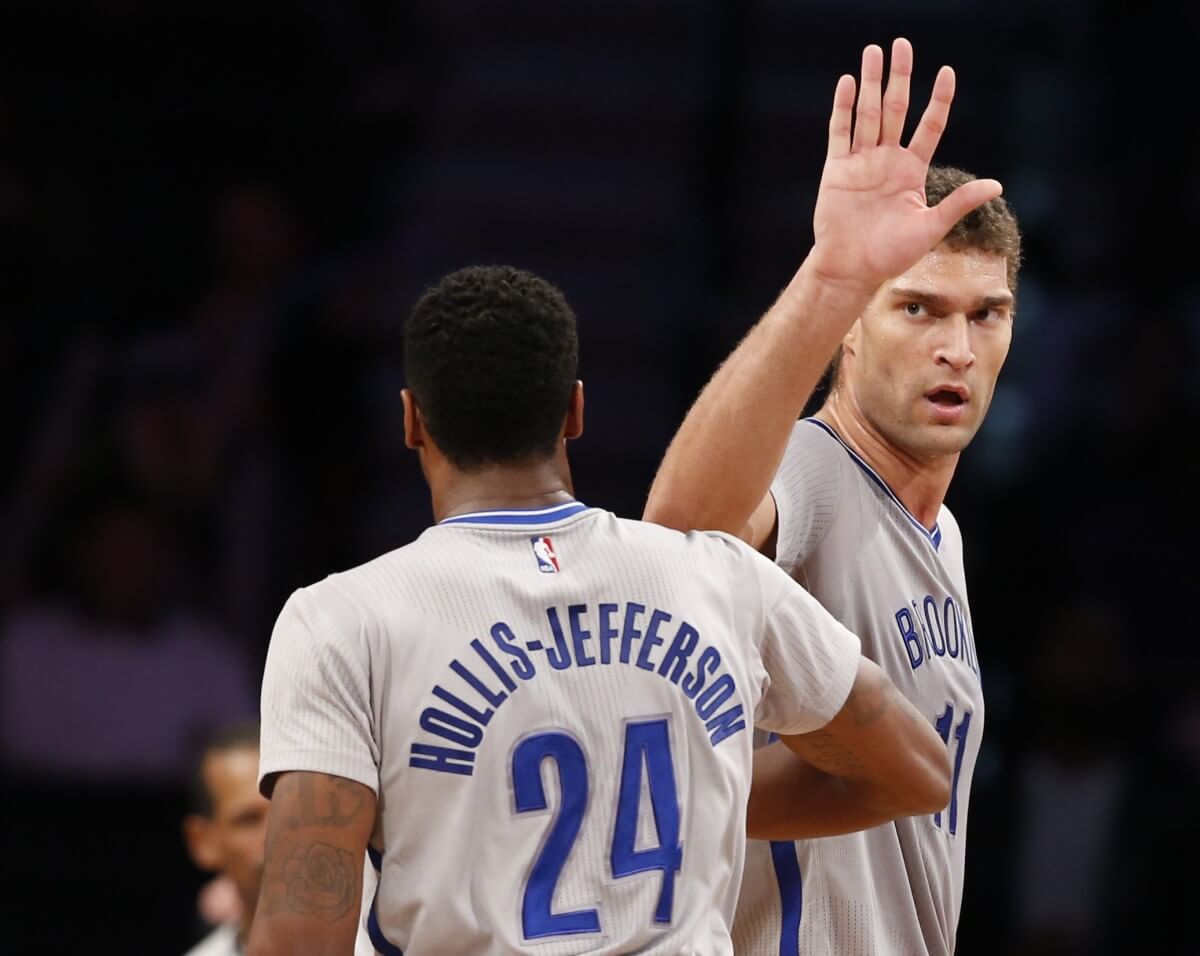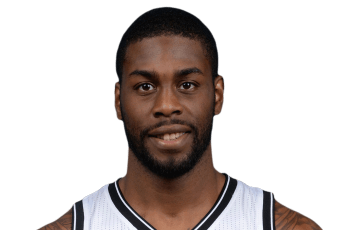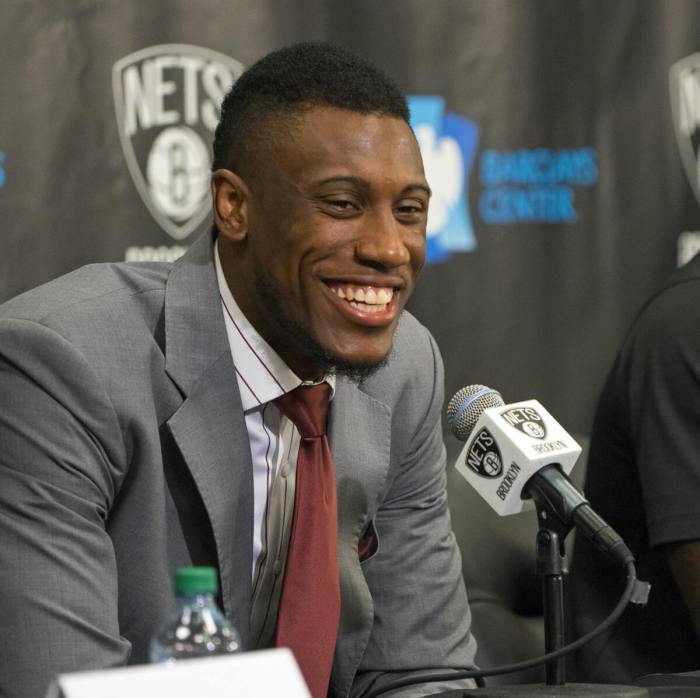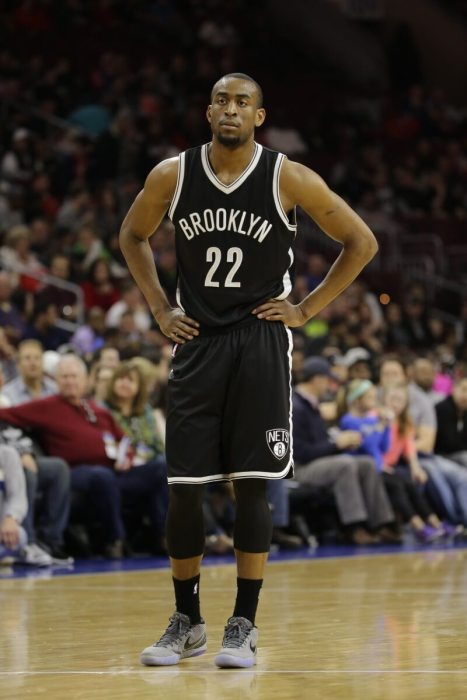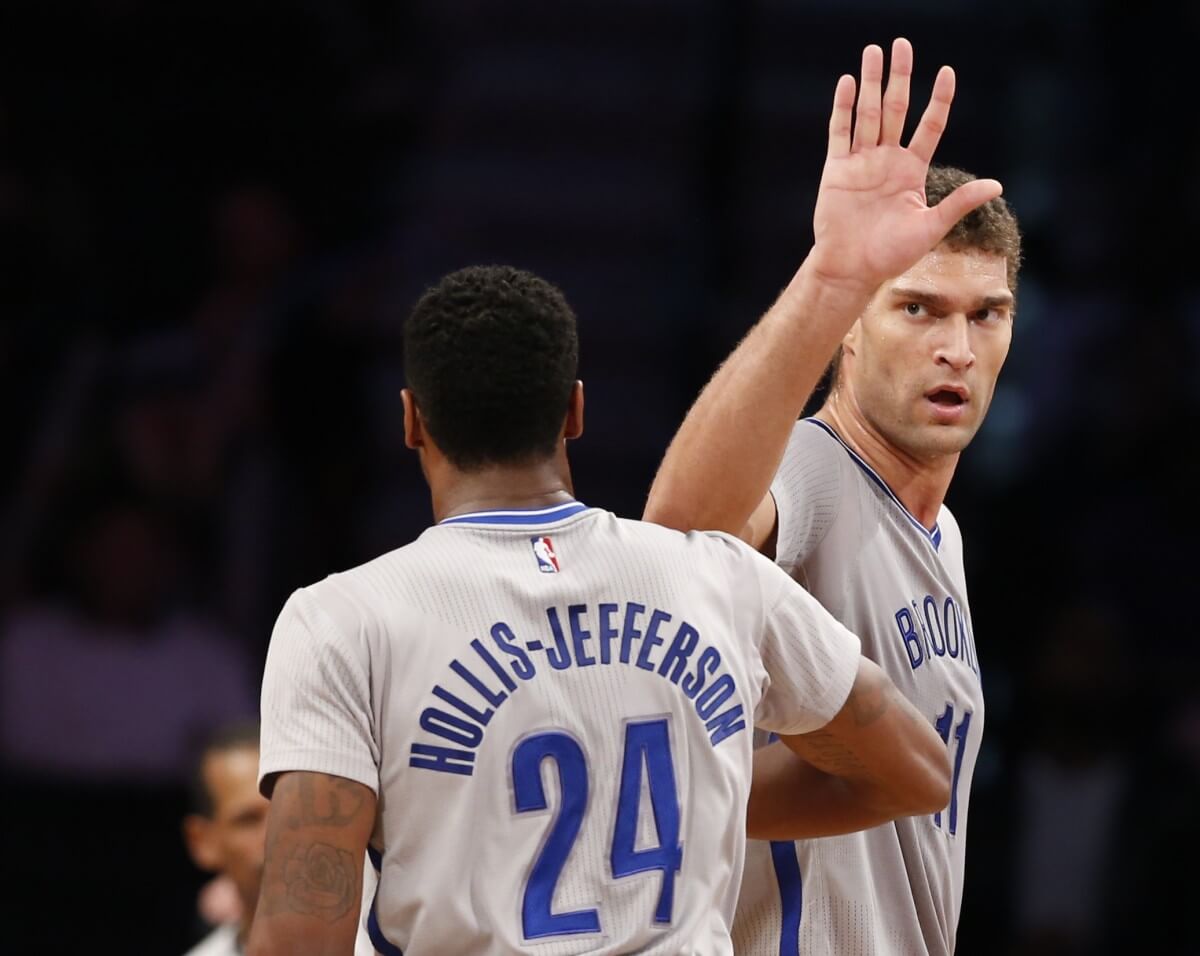
Back on October 31st, I posed this question.
Here’s the Nets schedule for tonight & November. By December 1, they will have ___ wins. pic.twitter.com/UopsVYPGCX
— devin kharpertian (@uuords) October 31, 2015
It was a spooky one. (Get it? Because Halloween. Please don’t leave.) Most responses fell in the range of 3 to 4 wins.
So with a 5-13 record, you could even say they’re beating expectations!
Okay, so the first quarter of the season didn’t go so well. But there is hope: after a brutal one-month stretch of road games against playoff teams, the Nets don’t leave New York again until December 18th, having already won back-to-back home games. Does the on-court product match the record?
Well, yes and no, which leads to our latest “Is It That Bad Here” Ranking:
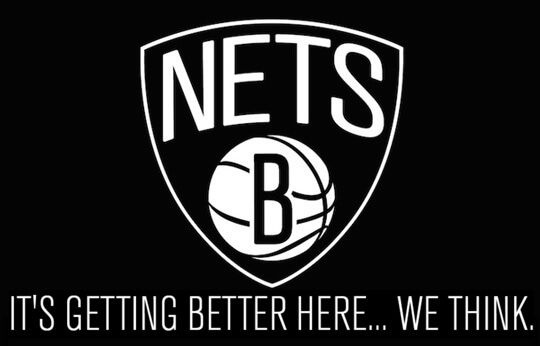
The top-seven top five
Since Lionel Hollins settled on a starting lineup of Jarrett Jack, Rondae Hollis-Jefferson, Joe Johnson, Thaddeus Young, and Brook Lopez, it’s been mostly a success night in and night out. There’s a little bit of awkwardness between where Brook Lopez should be defending pick-and-rolls and where he is, but that’s to be expected at this point, and everything else has hummed along: the Nets have outscored opponents by 7.4 points per 100 possessions with that lineup, ranking 7th in the NBA (minimum 100 minutes).
That switch flipped with Hollis-Jefferson. Swapping him in for Bojan Bogdanovic/Wayne Ellington is like replacing a spitting cobra with a lion. This week’s defensive highlight: watch how he leaps into position after getting tripped up on the game-deciding defensive possession Tuesday night.
While Bogdanovic and Ellington lurk in the background, looking for cuts looking for basket and spot-ups from fifteen feet out, Hollis-Jefferson roams and roars all over the floor, looking to make an impact by getting to the ball on either end. That means something in a lineup laden with offense-first players that are prone to off-ball stagnancy.
That’s meant a lot of things. For one, the Nets have controlled the glass due to Hollis-Jefferson’s surprising nose for loose balls and rebounds. His rebound rate ranks far and away the best among NBA wing players, clocking in at 14.8 percent; no other guard is even above 12 percent, per NBA.com.
He’s not alone in a rebounding resurgence, either. Thaddeus Young is also averaging a career-high in rebounds per game (8.4). Ditto for Jarrett Jack (5.0). Part of that is playing next to Brook Lopez, who has never been a world-beating rebounder, but that hasn’t made a difference: that lineup has the best defensive rebound rate and second-best offensive rebound rate of any 5-man unit with over 100 minutes played.
As a result, they’ve nearly doubled opponents in second-chance points with their current starters on the floor (68-36, +32). That difference alone has turned the starting lineup from ho-hum to ho-ly.
Another is the turnovers. Hollis-Jefferson has got a relentlessness about him on the defensive end that’s just refreshing to watch. If you’re looking for a reason to watch the early- and mid-quarter doldrums, keep an eye on Hollis-Jefferson off the ball. It’s great! Even when he gets locked on screens or beat backdoor, he uses his length to recover and get into passing lanes.
Hollis-Jefferson is still prone to rookie mistakes. He’ll miss certain defensive rotations, and his over-eagerness can get the better of him. Eric Bledsoe threw a beauty of a look-off pass here, and Hollis-Jefferson’s excitement to make a play got the better of him.
But those are fixable, teachable moments. No rookie is going to come in the league and dominate every single possession. The Nets have been solid with that starting 5 throughout, and it’s in large part to his impact.
Brooklyn’s BackBench
Do the math. The starters have been solid. The Nets are 5-13. Something’s gotta give, and it’s usually been when they switch out that front five. Six of the team’s nine 5-man units with a negative differential in at least ten minutes feature at least two bench players, per NBA.com. Wayne Ellington and Bojan Bogdanovic have both undershot expectations enough to bring the Nets down to the worst three-point shooting team in the league by any measure.
But! They’ve won their last four games at home, including their first two games this week against the Pistons and Suns, two relatively competitive teams. Ellington has apparently signed the “I’m 28 now, so I can hit shots” contract, which has helped out a bit, but it’s his backcourt backup mate Shane Larkin that’s made a bigger impact.
Larkin might play like there’s a piece of dirt stuck in his turbo button, but he’s also been the team’s steadiest backup and lone dead-eye shooter. Larkin has routinely said that he feels more comfortable in the less-confined, pick-and-roll heavy Brooklyn offense, and it’s paid dividends: he’s averaging career highs in points (7.4), assists (3.4), field goal percentage (48.7%), and three-point percentage (51.7%). (The counting numbers are true even if you adjust for pace and playing time.)
The last one is key, though aberrational, on this team. His time in Dallas and New York didn’t really reflect how good a shooter he was — he hit high marks when he had open shots — and he’s been on fire as of late from deep getting clean, comfortable looks. Take Larkin off the Nets and their three-point percentage on the season drops from an already-dismal 29.7% to a downright criminal 23.3%.
It’s the other side of the ball where Larkin runs into trouble. Lionel Hollins and Larkin both freely admitted Tuesday night that his season-high in minutes against the Suns came because Larkin could match up with the similarly small Eric Bledsoe and the Suns’ two-point guard lineup. The team ran through shootaround with various small lineups in preparation. It worked, and that’s good, but it’s also an admission that the team can only do so much. But off the bench in a pinch, the effect is limited.
Brooklyn’s BenchBigs
The two-game win streak coincides with an injury: Andrea Bargnani, who has taken the lion’s share of backup center minutes with Willie Reed injured and Thomas Robinson sticking at power forward, has sat out all but a couple of minutes with a strained left hamstring.
Bargnani’s lone NBA skill — catching the ball around the free throw line and slingshotting it towards the rim — is not particularly helpful when it comes to the general requirements of an NBA center, which can include scoring inside, defending pick-and-rolls, and protecting the rim. Even Bargnani’s stretchiness has been taut: he’s missed seven of nine three-pointers this season, and defenses seem content to let him fire away from 15 to 19 feet.
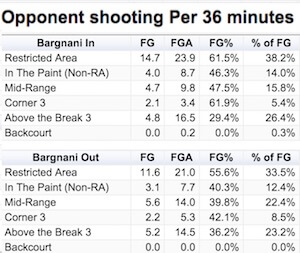 On the other end, Bargnani has done little to change the career-long perception about his defensive ability. The Nets are close to eight points per 100 possessions worse on the defensive end when Bargnani mans the center spot, and his team defensive rating of 108.4 is the worst on the roster by a significant margin. Teams freely take more shots at the rim (chart right).
On the other end, Bargnani has done little to change the career-long perception about his defensive ability. The Nets are close to eight points per 100 possessions worse on the defensive end when Bargnani mans the center spot, and his team defensive rating of 108.4 is the worst on the roster by a significant margin. Teams freely take more shots at the rim (chart right).
With Bargnani as the closest defender, players shoot 16.8 percent better from the field than average (62.3%), according to NBA.com, and opponents have hit 76.3 percent of shots against Bargnani from within six feet.
It would be one thing if the eye test didn’t match up with the figures. That happens sometimes. With Bargnani, it doesn’t appear to be the case. Watch how quickly he rotates back to Tristan Thompson at the top of the key. He locks on him from 22 feet away like he’s Kevin Love.
You might recall the Celtics running this “Stack” play last season against the Nets in the fourth quarter. Once Evan Turner gets into the lane, it’s all over.
With Bargnani out, those minutes have gone to Robinson. Robinson is hardly a prototypical NBA center: he’s undersize and most of his movements come north-south rather than laterally. But his energy is infectious, and that translates to rebounds and blocked shots. He’s not a perfect solution, but they’ve also stemmed the tide for two games with him at center, and he’s put down some fun athletic plays.
If Robinson continues to provide that type of energy and Willie Reed (thumb) returns to the court soon, Bargnani could have more competition for his minutes than he expected.
The Nets didn’t come into this season expecting to compete for a championship. The first month of the season didn’t change those expectations. They still don’t project to be very good. But with the schedule evening out a bit, there’s a chance to sneak a few wins they didn’t get in the first month of the season.

